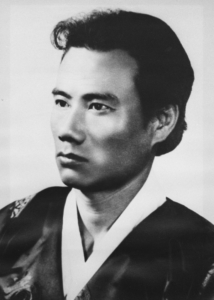History and Lineage
It is said that at the end of the Ice Age, a group of people traveled towards the east, where the sun was rising in the morning. People were looking for a source of heat and life force. They thought it was the sun that would bring it to them. They longed for strong solar energy and began intuitively practicing the Way of Receiving Bark. In the silent sun, they adjusted their bodies by changing positions and humbly tried to receive energy into all parts of the body. This practice of absorbing solar energy later developed into the SunDo exercise system.
It is assumed that the SunDo system was fully developed in the Neolithic period and was part of the educational system until it was transferred to the tribes in the mountains.
In ancient times in Korea, those who aspired to become shamans or spiritual leaders in the mountains left to gain the ability to communicate with Heaven. The sky, the moon and the stars were thought to be the vital force present in all living entities. It was believed that humans could more easily approach Heaven (the universe, the stars, the sun) in the mountains. The practice was naturally breath-centered because the air was the connection between Heaven, Earth, and the human beings. They tried to breathe more air and breathe harmoniously. Slowly, they learned how to breathe through the skin, to circulate the inhaled qi, and then to reach enlightenment.
These teachings were transmitted orally to those who were mentally and physically prepared.
SunDo was one of the reasons for the flourishing of the northeastern part of Asia, where the ancient peoples of Korea lived. Subsequently, Buddhism and other religions acquired a dominant position in Korea. In this ancient time, all the eminent kings, scholars, politicians and warriors were brought up in the practice of SunDo. Over time, SunDo lost its popularity because its practice was considered too demanding for the development of soul and spirit.
The teachers then took the practice to the mountains with the remaining students in order to maintain the continuity of the SunDo system.
In 1967, after 20 years of intense SunDo practice, Master Chung San (pictured below right) came down from the mountains to bring the practice back. After hundreds of years of isolated practice, the mountain masters have decided that it was time to unlock the secrets of the SunDo for the benefit of the people of the modern world.



Daoist hermit Be-Kyung, whose original name was Chung-San (Blue Mountain), was a young boy wandering in the mountains of Korea when he met a strange man. This man said, “If I teach you to break stones, will you follow me?” The young boy was more curious than serious and he answered, “Yes.” The man, Chung-Woon (Clear Clouds), proceeded to break stones with his fingers, so the boy (Chung-San) decided to follow this mountain hermit and learn his teachings.
Chung-San lived an ascetic life for about 20 years, taught by Chung Woon and his teacher, Moo Woon (No Clouds). Toward the end of this period, Chung-Woon announced to Chung-San that it was time he returned to society to pass on the wisdom of the ancient SunDo teachings. At that time, Chung-Woon gave him another name, Be-Kyung (Secret Boundary).
Be-Kyung prepared to re-enter normal life by adjusting his diet, obtaining clothing and remembering the ways of the people who don’t live in nature. In 1970, under Be-Kyung’s supervision, the first SunDo main school (the Kouk SunDo Center) opened in Seoul, Korea. After 15 years of service to his fellow human beings, Be-Kyung, in 1984, quietly returned to the hermit life in the mountains.

He lives in Korea, spends part of the year in Vermont, USA, where he has founded the International SunDo Retreat Center .
Master Kim’s teaching follows the Taoist tradition to encourage the student’s independence, one’s own thinking and the integration of SunDo into daily life.
Beginners and practitioners can take part in retreats with Master Kim.
